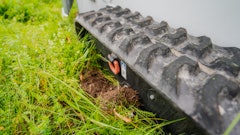Parts sales have been good in recent years, with many dealers citing customers trending toward repairing equipment and paying closer attention to routine maintenance. It is all done in an effort to prolong the life of their machine.
As customers turn to dealers for more parts, it changes the way dealers manage their parts department inventory and what they choose to have in stock.
Parts Sales Up
According to dealers surveyed by Yard & Garden magazine, 48% said their 2010 parts sales were up, 30% fell flat and only 22% were down. Additionally, 53% predict their parts sales will be up in 2011.
“Our parts sales have increased in most areas,” says Chris Klix, general manager at Lakeview Power Equipment in Rowlett, TX. “We have noticed an increase in the number of people who have started their own little repair businesses coming in to buy parts and setting up accounts.”
At RM Small Engine Repair in Fort Atkinson, WI, Roy Magsamen reports that part sales were up 12% in 2010. To help push parts sales even further, more dealers have started to run specials and offer packaged buys on related products.
“We offer parts coupons as well as bulk discounts and packages. We have set up a clearance bin to move some parts at discounted prices,” Klix shares. “We normally do large spring orders or promotion orders for parts to get the biggest discounts available for us in order to help the customer out in the end.”
What’s In Stock?
With parts sales growing, dealers are assessing the needs of their customers as well as changes in the market. They are adjusting their parts inventories accordingly. As the market’s fuel options change with the addition of higher ethanol fuel blends, and more electric equipment is sold, parts needs change as well.
“With the quality of gas and the ethanol levels the way they are, small engines are requiring more maintenance,” says Klix.
An increase in demand for parts has Magsamen looking to his suppliers to see how their turnaround times match customer needs. “I have shopped around and know my suppliers. I let some of them warehouse the parts so long as I know I can get it over night,” Magsamen explains. “There is no need to double my inventory if I know I can key it in at two in the afternoon and get it by 10 in the morning.”
Just knowing which suppliers have the greatest fulfillment rate and larger stock helps greatly, but understanding the needs of your customers is the most important. “As we continue to grow here, we find out what our customers need more. Rather than ordering the same thing twice a week we learn to stock it. It’s a matter of getting to know our clientele,” says Magsamen. “Our inventory has seen a 10% increase from what we’ve had in the past.”
Harvey Fox runs Hilltop Lawn & Garden in East Earl, PA. Also a newer dealership, they are going into their fifth year in business. Early in his career as a dealer, Fox already understands the importance of continuous parts management.
“We have learned it is critical to actually manage the parts department. When a part needs to be ordered it is always scrutinized,” says Fox. “We do not stock it unless we have sold it a minimum of five times through the spring season.” The number stocked then carries over depending on the season and if it is used in the commercial market versus consumer market.
Management Tools and Storage
An increase in parts inventory means more products to manage. Business management systems and parts bins or cabinets continue to help dealers and their staff easily locate necessary parts. Each dealer chooses how to organize parts based on the comfort level and preference of staff.
“We have an extremely large inventory of parts upstairs. Parts are all in corrugated boxes in numerical order by each manufacturer,” says Klix. “Over the last five years, we have expanded shelving and added wall space to hang parts. We currently have approximately 25 different manufacturers that we stock parts for. This has grown from approximately 10 manufacturers. We only do inventory once a year during the fall when business slows down.”
At RM, fast-moving parts are stored behind the counter, small items to the right of the sales counter, and larger items in the back cataloged by manufacturer and in numerical order.
Having worked in the industry for 30 years, Magsamen has a pretty good handle on parts numbers and even has many memorized. As his staff grows he sees he will need to accommodate for those with a different knowledge base.
“Employees who don’t have the same knowledge will come to me and ask for a part’s location rather than look it up,” explains Magsamen. “I’m working on shifting our parts management to a more computerized system with bar coding and electronic orders to help employees do their jobs better and leave customers more satisfied with the service.”




















